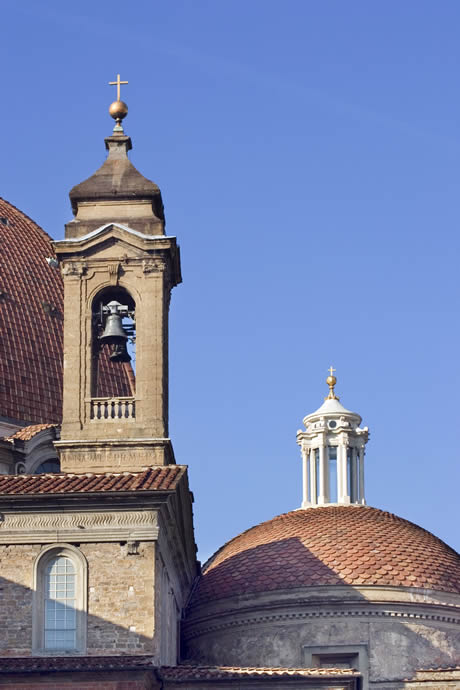Piazza San Lorenzo

Though less impressive by its dimensions than other similar tourist hotspots in Florence, Piazza San Lorenzo is, on the other hand, one of the most frequented of all due to its huge artistic and cultural asset. It is not just the Church of San Lorenzo – the one that gives the name to the entire piazza – which counts as an undeniable heritage of Florence located in Piazza San Lorenzo, since it is both the oldest cathedral of the capital of Tuscany and the result of the work of two architectural Renaissance geniuses, namely, Brunelleschi and Michelangelo. The adjoining objectives too, that is, the Laurentian Library (Biblioteca Laurenziana) and the Medici Chapel enhance the rating of this piazza. It is true they were originally erected as structures pertaining to a single complex of buildings delineated by the imposing presence of the Church of San Lorenzo. The latter, being conceived as a burial place for the notable members of the Medici family, proved not to be able to comply with the subsequent plans of the famed Florentine family.

Thus, the Biblioteca Laurenziana is a later structure marvelously engrafted into the Church of San Lorenzo by Michelangelo who, again, proved to have an incredible grasp of the architectural logic of the older structure by coherently harmonizing it with the new one. Obviously, the chief difficulty of Michelangelo’s work was to superimpose a solid new structure on the foundations of a centuries old religious establishment, but he finally managed to honor his task successfully. The library is valuable not only as to its architectural design, but also by its paper and book asset partially recovered from where the circumstances estranged it in time. The Medici Chapel, on the other hand, consists of two main elements, namely, the New Sacristy and the Chapel of the Princes. The New Sacristy was designed by Michelangelo as an architectural reflex of the Old Sacristy located within the church as such and built by Brunelleschi.
Michelangelo, however, did not complete his work to the New Sacristy, though its mark is fairly visible on the architectural, sculptural and pictorial array of the sacristy. The Chapel of the Princes, on the other hand, due to the fact its construction extended for more than a century, and despite its having required the participation of several ascertained Renaissance and Mannerism artists (such as Buontalenti and Mario Nigetti), lacks coherence of styles and it amounts, some say, to an eclectic array of works, failing to materialize the initial plan intended by Giovanni de Medici. The bottom line is regardless of such possible critic comments, Biblioteca Laurenziana and the Medici Chapel yield, along with the Church of San Lorenzo, a genuine artistic jewel enhancing the tourist rating of Piazza San Lorenzo. Also taking into consideration the fact that Piazza San Lorenzo is virtually minutes from Piazza del Duomo and that it is located in the main market district of Florence, one can easily understand the accessibility of this notable tourist hotspot of the capital of Tuscany.